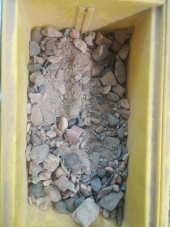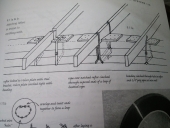Hi all,
First of all, I want to thank you all who have helped me so much with my past earthbag questions. I keep pretty busy and have difficulty finding time to post a proper thank-you. You guys, and this site, have been a great resource.
Anyways, my next question is, how much gravel is ideal for earthbag construction mixes? Most sources that I see say that approximately 20% clay to 80% sand and gravel mix is ideal. However, what I have not seen yet is what the ideal ratio of sand to gravel actually is. So I wonder, what is the absolute maximum and the absolute minimum amount of crushed gravel that should be present in an earthbag?
Personally, I'm stuck in a position where I need to purchase the sand and gravel mix separate of the clay mix from the local gravel pit. Attached is a picture I took of their sample of sand and gravel mix, which contains three-quarter inch crushed gravel pieces. After looking at the picture, I would like to know if this looks like too much gravel. To me it looks like a lot, but after adding the clay mix, do you all think this looks like a good choice? They have other mixes available, like plain sand, but my sources say that something with a bit of small gravel bits is more ideal. Can strong earthbags be made with just sand and clay?
Anyways, would love your thoughts. Hopefully this hasn't already been discussed elsewhere and can help others.










